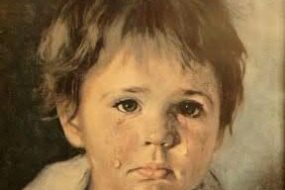
Teh Lost Colony of Roanoke: The Mysterious Disappearance that Shaped American History
Imagine stumbling upon a centuries-old settlement, eerily abandoned, with no signs of struggle or violence, but a single, cryptic clue etched into the bark of a tree. The word “CROATOAN” is all that’s left behind, a haunting message that has sparked the imagination of historians and conspiracy theorists for centuries. Welcome to the baffling tale of the Lost Colony of Roanoke, a story that has become an integral part of American folklore, and one that continues to fascinate us to this day. On a sweltering summer day in August 1590, a supply ship arrived at the Roanoke Colony in what is now Dare County, North Carolina, only to find that the 117 colonists had vanished into thin air. The disappearance of the Lost Colony is one of the most enduring unsolved mysteries in American history, and its impact is still felt today.
To understand the meaning of this event, we need to go back in time to the late 16th century, when England was eager to establish a foothold in the New World. Sir Walter Raleigh, the renowned explorer and courtier to Queen Elizabeth I, had been granted a charter to settle a colony in North America. The first attempt, in 1585, ended in failure, with the colonists returning to England after a grueling winter. Undeterred, Raleigh sent a second group of settlers to Roanoke Island in 1587, led by John White, an artist and cartographer who had accompanied the previous expedition.White’s group included 117 people, men, women, and children, who were tasked with establishing a thriving colony.
As the colony struggled to get off the ground, John White’s daughter, Eleanor Dare, gave birth to a baby girl, named Virginia Dare, who would become the first English child born in the New World. However, the colony was facing numerous challenges, including conflicts with the local Algonquian-speaking tribes, harsh whether conditions, and a lack of supplies. John White, who had been appointed governor of the colony, was forced to return to england to procure more resources, leaving his family and the other colonists behind. Little did he know that his journey would be prolonged, and he wouldn’t return to Roanoke until three years later.
As White sailed across the Atlantic, he was met with unexpected resistance. England was on the brink of war with spain, and the english navy was mobilized to counter the Spanish Armada. White’s ship was commandeered for the war effort, and it wasn’t until August 1590 that he finally arrived back at Roanoke. As he stepped onto the deserted island, he was met with an unsettling silence. The colonists were nowhere to be found, and the only clue was the word “CROATOAN” carved into a tree. White was convinced that the colonists had relocated to Croatoan Island, now known as Hatteras Island, which was inhabited by a kind Algonquian tribe. However, a fierce storm prevented him from investigating further, and he was forced to return to England, leaving behind more questions than answers.
Theories have abounded about the fate of the Lost Colony. Some beleive that the colonists were absorbed into the local tribes, while others speculate that they were massacred or killed by disease. the “CROATOAN” clue has sparked intense debate, with some arguing that it was a message from the colonists indicating their relocation, while others see it as a red herring. Archaeological excavations have uncovered tantalizing evidence, including artifacts and remains, but the truth remains elusive. So, what really happened to the Lost Colony of Roanoke?
Some of the most popular theories include:
The colonists were absorbed into the local tribes, adopting their customs and way of life.
The colonists were victims of disease, such as smallpox or malaria, which were prevalent in the region.
The colonists were massacred by the algonquian-speaking tribes, who were antagonistic towards outsiders.
the colonists attempted to relocate to Croatoan Island but were met with resistance from the local tribe.
The disappearance of the Lost Colony has had a lasting impact on American history and culture. The mystery has captured the imagination of writers, artists, and historians, inspiring countless works of fiction and nonfiction.The story has been retold and reinterpreted in various forms, from John Green’s Pulitzer Prize-winning novel “The Fault in Our Stars” to the TV series “American Horror story.” The legend of the Lost Colony has become an integral part of American folklore, symbolizing the risks and uncertainties of exploration and settlement. Moreover, the event has been cited as a precursor to the many disappearances and unsolved mysteries that continue to plague American history.
The Lost Colony’s legacy extends beyond the realm of popular culture. It has also had a profound impact on the way we think about the early history of European settlement in North America. The disappearance of the colonists highlights the challenges and complexities faced by early settlers, who often struggled to adapt to the harsh realities of the New World.The story serves as a poignant reminder of the cultural clashes and conflicts that arose between European settlers and indigenous peoples, a theme that continues to resonate today.
in the years that followed, the Lost Colony has been the subject of much speculation and debate. Some of the key evidence and findings include:
| Finding | Description |
|---|---|
| The “CROATOAN” clue | A cryptic message carved into a tree, suggesting that the colonists may have relocated to Croatoan Island. |
| Artifacts and remains | Archaeological excavations have uncovered various artifacts and remains, including pottery, tools, and skeletal remains. |
| Local tribe accounts | Accounts from local Algonquian-speaking tribes suggest that the colonists may have been absorbed into their communities. |
The Lost Colony of Roanoke remains one of the most fascinating and enigmatic events in american history,a story that continues to inspire and haunt us to this day. As we reflect on this enigmatic event,we are reminded of the power of storytelling to shape our understanding of the past and inspire our imagination.
#TheLostColonyOfRoanoke #MysteriousDisappearance #AmericanHistory #UnsolvedMystery #HistoricalEvents #TrueStory #HistoryBuff #infographicstory #DidYouKnow #WorldHistory #GlobalFigures #AmericanFolklore #TheInfographicsShow #RoanokeColony #JohnWhite #VirginiaDare #CROATOAN #AlgonquianTribe #EarlyAmericanSettlement #UnsolvedPhenomena #HistoryNerd #DocumentaryStyle #EngagingStorytelling
<img class="bimage_class" src="https://campusstore.co.za/wp-content/uploads/2025/04/harter.jpg80f2.jpg" alt="The Lost Colony of Roanoke: The Mysterious Disappearance that Shaped American history
Imagine stumbling upon a centuries-old settlement, eerily abandoned, with no signs of struggle or violence, but a single, cryptic clue etched into the bark of a tree. The word “CROATOAN” is all that’s left behind, a haunting message that has sparked the imagination of historians and conspiracy theorists for centuries. Welcome to the baffling tale of the Lost Colony of Roanoke, a story that has become an integral part of American folklore, and one that continues to fascinate us to this day. On a sweltering summer day in August 1590, a supply ship arrived at the Roanoke Colony in what is now Dare County, North Carolina, only to find that the 117 colonists had vanished into thin air. The disappearance of the Lost Colony is one of the most enduring unsolved mysteries in American history,and its impact is still felt today.
To understand the significance of this event, we need to go back in time to the late 16th century, when England was eager to establish a foothold in the New World. Sir Walter Raleigh, the renowned explorer and courtier to Queen Elizabeth I, had been granted a charter to settle a colony in North America. The first attempt, in 1585, ended in failure, with the colonists returning to England after a grueling winter. Undeterred, Raleigh sent a second group of settlers to Roanoke Island in 1587, led by John white, an artist and cartographer who had accompanied the previous expedition. White’s group included 117 people, men, women, and children, who were tasked with establishing a thriving colony.
As the colony struggled to get off the ground, john White’s daughter, Eleanor Dare, gave birth to a baby girl, named Virginia Dare, who would become the first English child born in the New World. However, the colony was facing numerous challenges, including conflicts with the local algonquian-speaking tribes, harsh weather conditions, and a lack of supplies. John White, who had been appointed governor of the colony, was forced to return to England to procure more resources, leaving his family and the other colonists behind. Little did he know that his journey would be prolonged, and he wouldn’t return to Roanoke until three years later.
As White sailed across the atlantic, he was met with unexpected resistance. England was on the brink of war with Spain, and the English navy was mobilized to counter the Spanish Armada. White’s ship was commandeered for the war effort,and it wasn’t until August 1590 that he finally arrived back at roanoke. As he stepped onto the deserted island, he was met with an unsettling silence. The colonists were nowhere to be found, and the only clue was the word “CROATOAN” carved into a tree. White was convinced that the colonists had relocated to Croatoan Island,now known as Hatteras Island,which was inhabited by a friendly Algonquian tribe. though, a fierce storm prevented him from investigating further, and he was forced to return to England, leaving behind more questions than answers.
Theories have abounded about the fate of the Lost Colony.Some believe that the colonists were absorbed into the local tribes, while others speculate that they were massacred or killed by disease. The “CROATOAN” clue has sparked intense debate, with some arguing that it was a message from the colonists indicating their relocation, while others see it as a red herring. Archaeological excavations have uncovered tantalizing evidence, including artifacts and remains, but the truth remains elusive. So, what really happened to the Lost Colony of Roanoke?
One theory is that the colonists attempted to relocate to Croatoan Island but were met with resistance from the local tribe. The Algonquian-speaking tribes in the region were known to be hostile towards outsiders, and it’s possible that the colonists were either killed or forced to flee. Another theory suggests that the colonists were victims of disease, perhaps smallpox or malaria, which were prevalent in the region. However, this theory doesn’t explain the lack of remains or the “CROATOAN” clue. Some researchers have pointed to the presence of a secret message or code in the colonists’ letters and diaries, hinting at a more sinister plot.
The disappearance of the Lost Colony has had a lasting impact on American history and culture. The mystery has captured the imagination of writers, artists, and historians, inspiring countless works of fiction and nonfiction. The story has been retold and reinterpreted in various forms, from John Green’s Pulitzer Prize-winning novel “The Fault in Our Stars” to the TV series “American horror Story.” The legend of the Lost Colony has become an integral part of American folklore, symbolizing the risks and uncertainties of exploration and settlement. Moreover, the event has been cited as a precursor to the many disappearances and unsolved mysteries that continue to plague American history.
The Lost Colony’s legacy extends beyond the realm of popular culture. It has also had a profound impact on the way we think about the early history of European settlement in North America. The disappearance of the colonists highlights the challenges and complexities faced by early settlers, who often struggled to adapt to the harsh realities of the New World. The story serves as a poignant reminder of the cultural clashes and conflicts that arose between European settlers and indigenous peoples, a theme that continues to resonate today.
As we continue to ponder the fate of the Lost Colony, we are reminded of the power of mystery and intrigue to captivate our imagination. The story of Roanoke is a testament to the enduring allure of the unknown, a reminder that even in the age of modern technology and information, there are still secrets waiting to be uncovered. The lost Colony of Roanoke remains one of the most fascinating and enigmatic events in American history, a story that continues to inspire and haunt us to this day.
the Lost Colony of roanoke is a story that has captured the hearts and minds of people for centuries. From its origins as a struggling English settlement to its mysterious disappearance, the tale is a gripping reminder of the complexities and challenges of early American history. As we reflect on this enigmatic event, we are reminded of the power of storytelling to shape our understanding of the past and inspire our imagination.
#TheLostColonyOfRoanoke #mysteriousdisappearance #AmericanHistory #UnsolvedMystery #HistoricalEvents #TrueStory #historybuff #InfographicStory #DidYouKnow #WorldHistory #GlobalFigures #AmericanFolklore #TheInfographicsShow #RoanokeColony #JohnWhite #VirginiaDare #CROATOAN #AlgonquianTribe #EarlyAmericanSettlement #UnsolvedPhenomena #HistoryNerd #DocumentaryStyle #EngagingStorytelling”>










